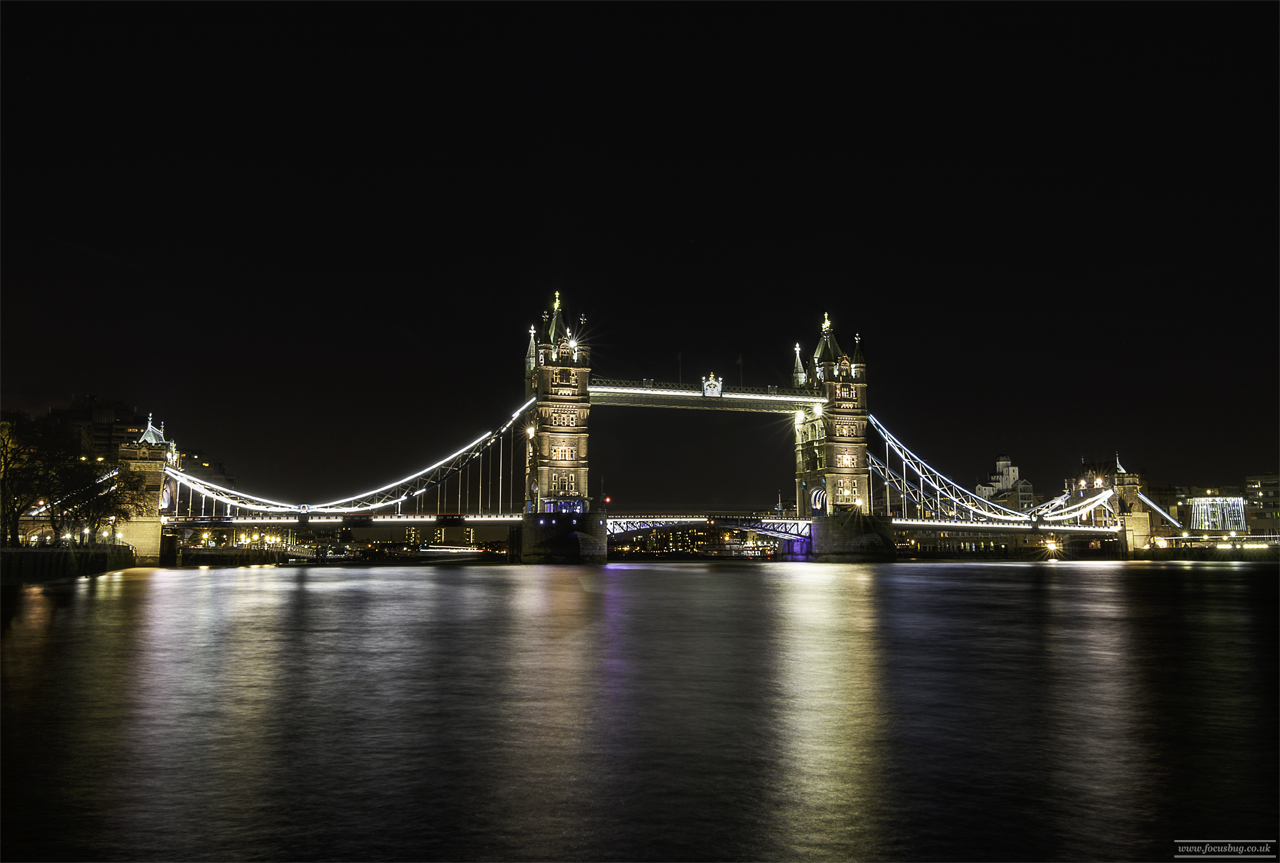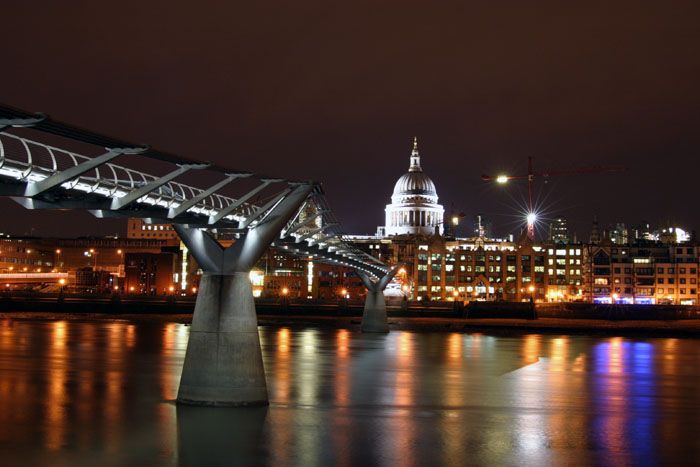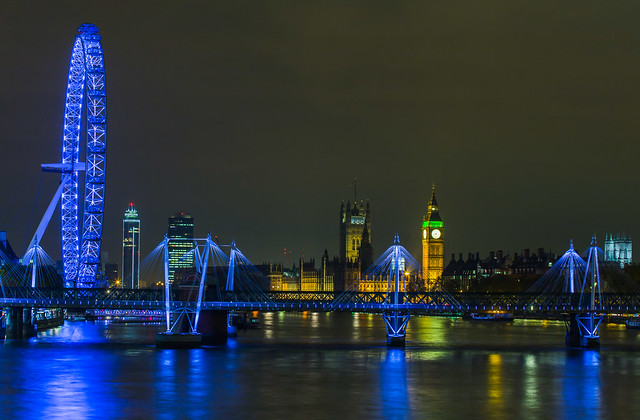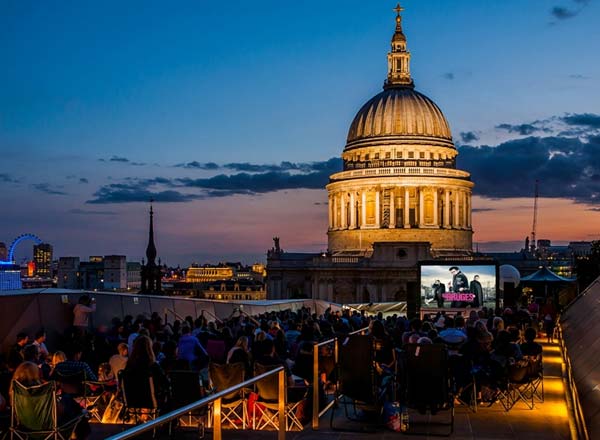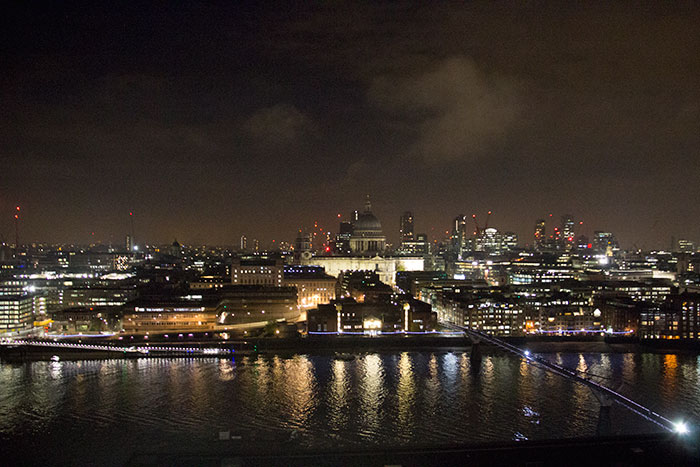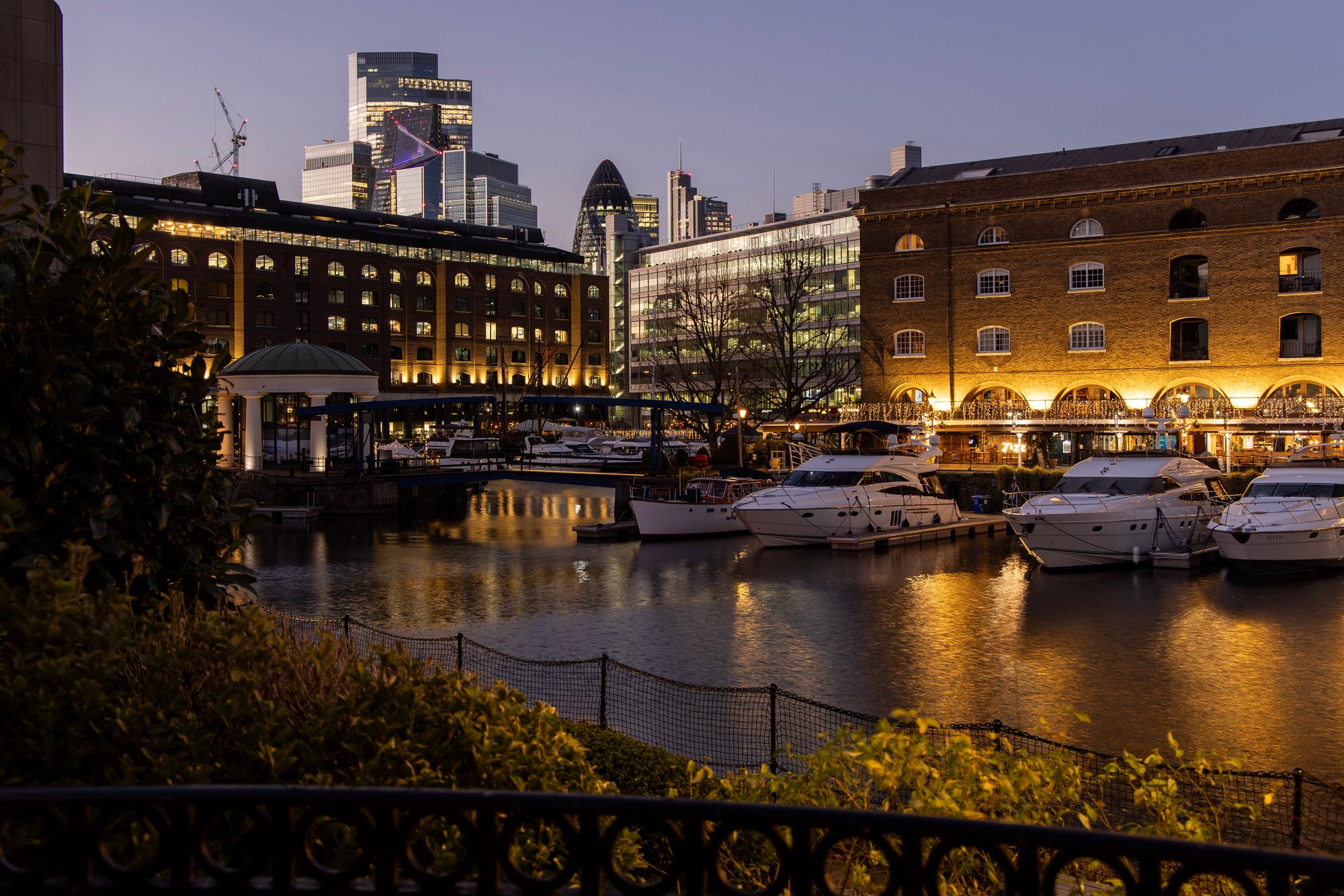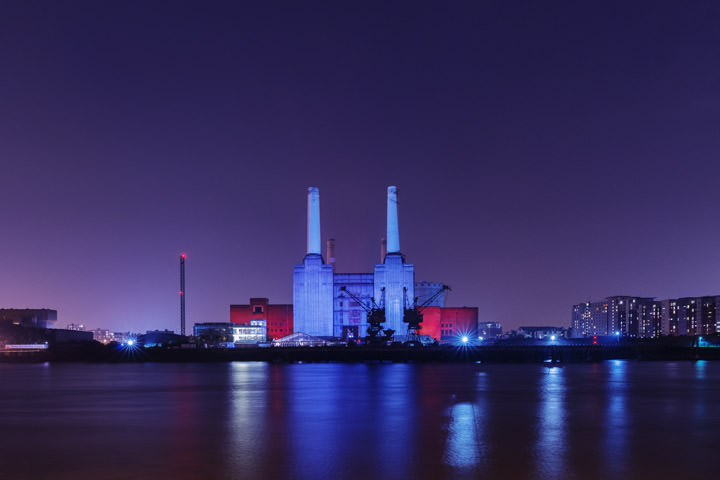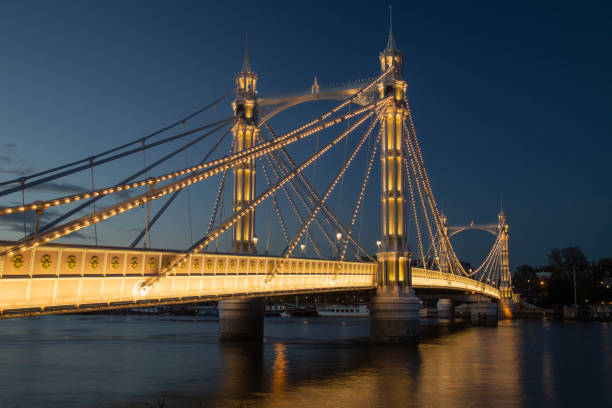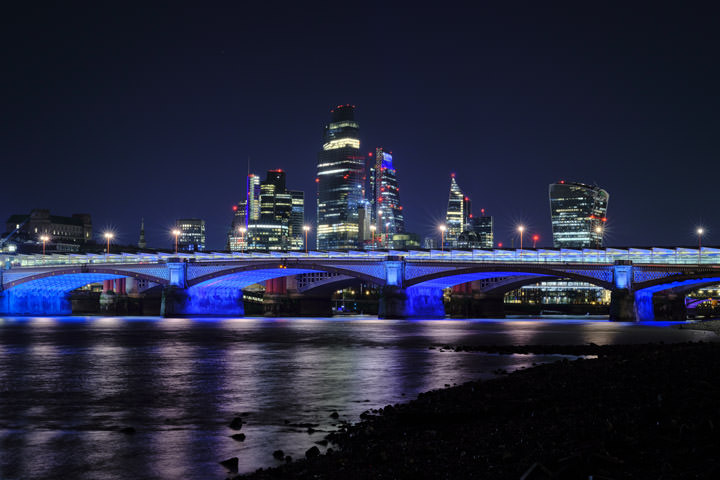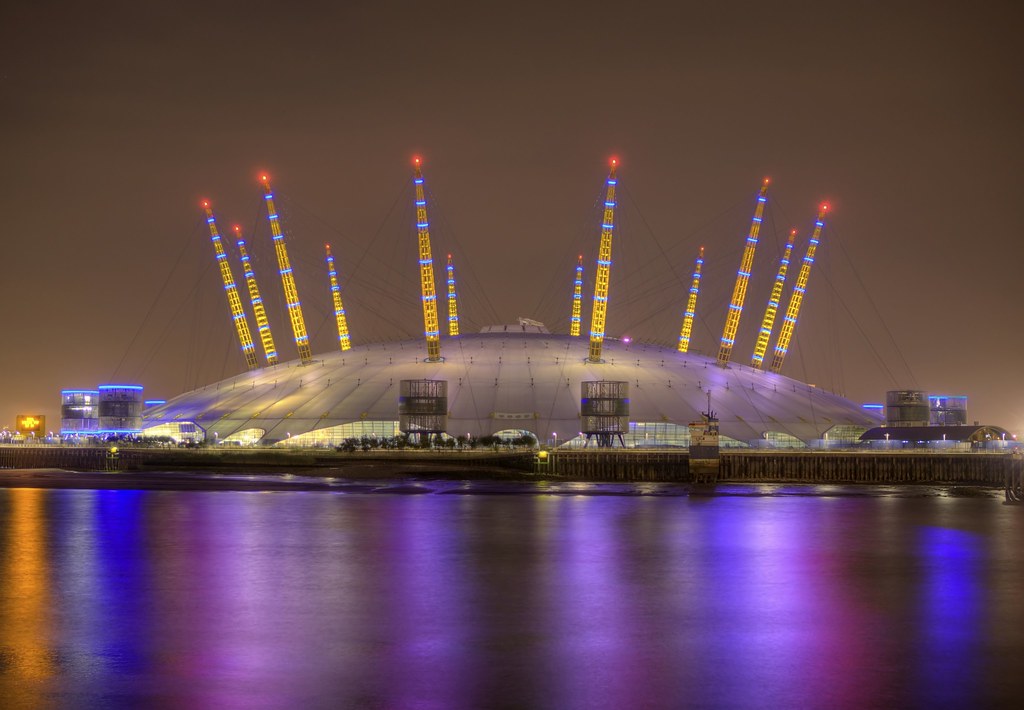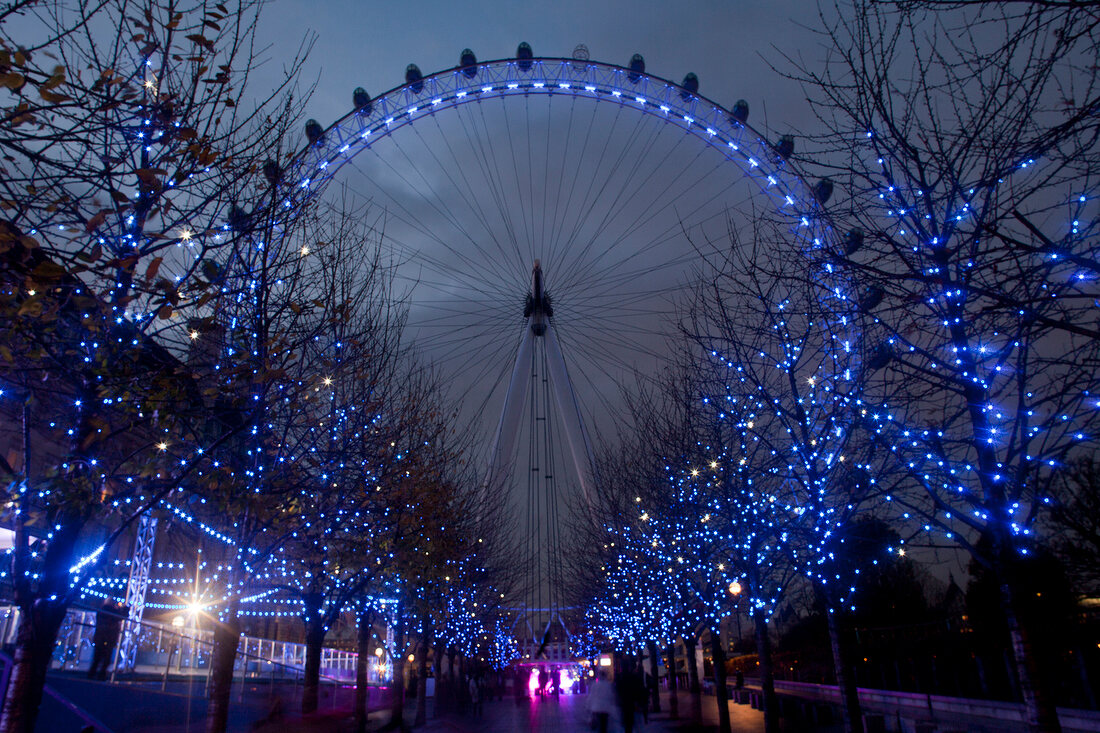15 London's Best Viewpoints For Night Photography
Capture London’s nighttime beauty with our comprehensive guide to the top 15 viewpoints for stunning night photography in the city.
Mar 04, 20254K Shares140.1K Views

London’s skyline takes on a magical glow after sunset, making it a paradise for photographers. With its mix of historic landmarks, modern skyscrapers, and the River Thames reflecting city lights, the city offers some of the best locations for capturing stunning night shots. If you're a seasoned photographer or an enthusiast looking for that perfect shot, knowing the right viewpoints can make all the difference.
Finding the ideal location is about more than just height considering elements like reflections, leading lines, and accessibility can help create breathtaking compositions. This guide highlights the best places in London for night photography, with detailed insights on what makes each spot special, the best angles to capture, and practical tips for getting the perfect shot.
1. The Shard
- Why it’s great:The tallest building in London, The Shard offers an unbeatable 360-degree panoramic view of the city from 310 meters high. The observation deck gives an expansive perspective of the Thames, Tower Bridge, the Gherkin, and even Canary Wharf. If you're searching for the best photo spots London has to offer, this iconic skyscraper provides a stunning vantage point, especially at sunset when the city lights begin to sparkle.
- Best shots:Aerial views of the illuminated bridges, the Thames reflecting city lights, and the sprawling skyline. The long exposure captures streaks of moving traffic below.
- Access & timing:Open until late; ticket required. Advanced booking is recommended to avoid crowds.
2. Sky Garden
- Why it’s great:Sky Garden, located at 20 Fenchurch Street (the Walkie-Talkie building), provides stunning night views at no cost. Unlike The Shard, it's an open-air space with a unique mix of greenery and glass walls, allowing for clear shots without obstructions.
- Best shots:The illuminated Tower Bridge, St. Paul’s Cathedral, and the Thames snaking through the city.
- Access & timing:Free entry but requires online booking in advance. Open until 10 PM on weekdays and 11 PM on weekends.
3. Tower Bridge
- Why it’s great:Tower Bridge is one of the most photographed landmarks in London, especially at night when its Victorian architecture is illuminated. From the bridge, you get views of both the modern and historic aspects of London.
- Best shots:Long exposure shots of light trails from vehicles crossing the bridge, reflections of the bridge in the Thames, and panoramic views of The Shard and City Hall.
- Access & timing:The bridge is free to walk across and open 24/7. The upper-level Tower Bridge Exhibition closes at 5:30 PM.
4. Primrose Hill
- Why it’s great:Located in Regent’s Park, Primrose Hill offers one of the best natural viewpoints of London. Unlike rooftops and bridges, this spot provides an unobstructed, elevated cityscape view without barriers. It’s also a quieter location compared to central viewpoints.
- Best shots:A wide-angle panoramic capture of the London skyline, featuring landmarks like The Shard, the BT Tower, and Canary Wharf.
- Access & timing:Open 24/7, no entry fee. Best visited on a clear night for an uninterrupted view of the city lights.
5. Millennium Bridge
- Why it’s great:This pedestrian bridge offers a stunning symmetrical view of St. Paul’s Cathedral, framed by the steel suspension cables. At night, the bridge’s lighting and the reflections in the Thames create a fantastic composition.
- Best shots:Long exposure photos capturing light trails from people walking, as well as the reflection of St. Paul’s Cathedral in the water below.
- Access & timing:Open 24/7 and easily accessible by foot from St. Paul’s or the Tate Modern.
6. Waterloo Bridge
- Why it’s great:Often overlooked, Waterloo Bridge provides some of the best night views of London. It offers a vantage point that includes both the City of London skyline and the West End, making it unique among London’s bridges.
- Best shots:Long exposure images of Westminster, the London Eye, and the illuminated skyline stretching towards Canary Wharf.
- Access & timing:Open 24/7, free access. Ideal for photographers who want a less crowded alternative to Tower Bridge.
7. One New Change Rooftop
- Why it’s great:One New Change is a shopping center with a rooftop terrace that provides an incredible, close-up view of St. Paul’s Cathedral. The glass reflections add an extra layer of depth to compositions.
- Best shots:Capture St. Paul’s Cathedral framed within the glass railings, creating a perfect mirrored shot.
- Access & timing:Free entry, open until 9 PM.
8. Tate Modern Viewing Level
- Why it’s great:The Tate Modern's viewing platform offers a direct view of St. Paul’s Cathedral, the Millennium Bridge, and the City’s skyscrapers. It’s one of the best spots to photograph the Thames at night.
- Best shots:Stunning perspectives of London’s riverbanks, reflections of city lights on the Thames, and long exposure shots of passing boats.
- Access & timing:Free entry; closes at 10 PM on weekends.
9. St. Katharine Docks
- Why it’s great:This peaceful marina near Tower Bridge offers a different take on London’s waterfront at night, with yachts and historic buildings lit up beautifully.
- Best shots:Reflections of boats and city lights in the water and close-up details of the illuminated bridge and surrounding architecture.
- Access & timing:Open 24/7, free access.
10. Battersea Power Station
- Why it’s great:This recently redeveloped area along the Thames blends historic industrial architecture with modern lighting, creating a fantastic urban night photography location.
- Best shots:The power station’s illuminated chimneys against the night sky, reflections on the river, and light trails from passing boats.
- Access & timing:Open until late; riverside walkways are free to access.
11. Albert Bridge
- Why it’s great:Albert Bridge, with its pastel-colored lights reflecting on the Thames, is one of the most picturesque bridges in London. It has a distinct charm that sets it apart from more famous bridges like Tower Bridge.
- Best shots:Long exposure shots of the bridge lights reflecting on the water, and creative compositions using the bridge’s unique suspension cables.
- Access & timing:Open 24/7, free access.
12. Blackfriars Bridge
- Why it’s great:This lesser-known bridge offers excellent opportunities for capturing light trails from trains entering and exiting Blackfriars Station, which is built over the Thames.
- Best shots:A combination of light trails from traffic, reflections of St. Paul’s Cathedral on the river, and the illuminated skyline of the financial district.
- Access & timing:Open 24/7, free access.
13. The O2 Arena
- Why it’s great:The O2 Arena provides a different perspective of London’s skyline from across the river in Greenwich. The lights from Canary Wharf and the reflections on the Thames create a spectacular view.
- Best shots:Wide-angle views of Canary Wharf’s skyscrapers glowing at night, with the Thames in the foreground.
- Access & timing:Open 24/7. The Emirates Air Line cable car nearby also offers fantastic aerial night shots.
14. Southbank
- Why it’s great:The Southbank is full of energy, with street performers, restaurants, and beautiful riverside views. The lights from surrounding attractions create a fantastic contrast against the night sky.
- Best shots:The London Eye with its bright colors, Westminster reflections on the Thames, and bustling nightlife scenes.
- Access & timing:Open 24/7. Ideal for photographers who enjoy capturing urban scenes
15. The London Eye Area
- Why it’s great: The South Bankaround the London Eyeserves as an ideal starting point for night photography adventures. Position yourself along Queen's Walk for unobstructed views of the illuminated wheel reflected in the Thames. The curved leading lines of the riverside path create compelling compositions, especially when incorporating the flow of passing pedestrians.
- Best shots: Westminster Bridge provides classical views of the Houses of Parliament and Big Ben. For the best results, arrive before sunset to secure a prime spot along the bridge's eastern side. Use the bridge's ornate lamps as foreground elements to frame the historic buildings beyond.
- Access & timing: During peak tourist seasons, visit on weekday evenings when crowds thin out after 9 PM. The area remains well-lit and safe throughout the night, with regular police patrols.
What Makes A Great Night Photography Viewpoint?
Not every viewpoint in London is ideal for capturing stunning night photos. The best spots have a combination of the following factors:
- City Lights & Reflections:Areas with well-lit buildings, bridges, and water reflections create visually striking compositions. The Thames, in particular, is a great source of reflections.
- Foreground & Framing:A compelling photo includes more than just a skyline. Bridges, statues, and streetlights help create depth and tell a story.
- Height & Accessibility:Some viewpoints require a ticket or reservation, while others are freely accessible 24/7. Knowing your options helps with planning.
- Stability for Long Exposure:Many night photos require slow shutter speeds. Locations with minimal vibrations (e.g., fewer pedestrians or vehicle movement) allow for sharper long-exposure shots.
- Crowd Levels:Popular spots like The Shard and Tower Bridge can get crowded, making it difficult to set up a tripod. Finding lesser-known locations can be beneficial.
Night Photography Tips For London
1. Use A Tripod For Stability
A tripod is crucial for night photography because longer exposure times mean even the slightest movement can blur your shots. London’s bright city lights and reflections on the Thames look stunning with long exposures, but handheld shots often lead to shaky images.
- Choose a sturdy tripod to withstand wind on bridges and high viewpoints.
- Use a remote shutter release or a timer to prevent vibrations when pressing the shutter.
- Avoid overcrowded areas where your tripod might get in the way or be unstable due to foot traffic.
2. Adjust Camera Settings For Optimal Exposure
Night photography requires specific camera settings to balance exposure and reduce noise.
- ISO: Keep it low (100-400) to minimize grainy noise in your images.
- Shutter Speed: Longer shutter speeds (2-10 seconds) allow more light into the sensor, making night scenes appear crisp and well-lit.
- Aperture: Use a narrow aperture (f/8 – f/16) for sharpness and depth of field, especially when capturing cityscapes.
- Manual Focus: Autofocus can struggle in low light, so switch to manual focus and use live view to fine-tune sharpness.
3. Shoot In RAW For Maximum Editing Flexibility
JPEG images compress details, but shooting in RAW preserves more information, allowing for better adjustments in post-processing.
- More control over exposure, white balance, and shadows when editing.
- Better noise reduction capabilities, which is useful when shooting in low-light conditions.
- Higher image quality for printing or professional use.
4. Look For Leading Lines To Create Depth
Leading lines help guide the viewer’s eye through an image, making compositions more dynamic and engaging. London’s streets, bridges, and riverside pathways offer excellent opportunities for using leading lines.
- Use bridges like Tower Bridge or Millennium Bridgeto create perspective and depth.
- Follow light trails from moving traffic on roads like The Mall or Waterloo Bridge.
- Frame reflections in the Thames to add symmetry and interest to your shots.
5. Experiment With Reflections For Dramatic Effects
London’s many reflective surfaces rivers, glass skyscrapers, and wet pavements create stunning compositions at night.
- Use the Thames to capture mirror-like reflections of city lights.
- Photograph modern glass buildings like The Shard or 20 Fenchurch Street (Walkie-Talkie) to play with reflections of surrounding lights.
- Shoot after rain for vibrant, reflective pavements that enhance street photography.
6. Use Light Trails To Add Motion And Energy
Light trails from cars, buses, and even boats on the Thames can create captivating long-exposure shots.
- Find busy roads near landmarks like Westminster Bridge or Piccadilly Circusfor stunning red and white streaks.
- Use a slow shutter speed (5-15 seconds) to capture smooth, continuous light trails.
- Position your camera at an elevated angle to capture sweeping trails from multiple directions.
7. Be Mindful Of Safety While Shooting At Night
While London is generally safe, carrying expensive photography gear at night requires extra caution. When capturing stunning shots around the city of London, be mindful of your surroundings, especially in quieter areas.
- Stick to well-lit areas and avoid quiet, isolated streets.
- Be aware of your surroundings when setting up a tripod, especially near roads or bridges.
- Use a camera strap or discreet backpack to keep your gear secure.
FAQs
Where Is London Red Light District?
The city, Southwark and Covent Gardenhave all been hotspots. In more recent years, Soho's been known as London's red light district. Whilst that still remains true, its image has evolved in the past 20 years or so.
What's The Best Way To Handle High Contrast In Night Scenes?
Use bracketing techniques, capturing multiple exposures to blend in post-processing. Alternatively, graduated ND filters help balance bright skies with darker foregrounds.
What Camera Settings Work Best For London Night Photography?
Start with ISO 100, f/8, and adjust shutter speed based on available light. For moving subjects like the London Eye, use faster shutter speeds (1/60s or higher). For light trails, experiment with 10-30 second exposures.
Do I Need Permits For Night Photography In London?
Most public spaces don't require permits for tripod-based photography. However, private venues like Sky Garden and One New Change have specific policies. Always check venue websites or contact management beforehand.
Final Thoughts
London at night is a playground for photographers, with an endless array of angles, reflections, and illuminated landmarks to capture. If you prefer the heights of The Shard, the charm of Tower Bridge, or the tranquility of Primrose Hill, these viewpoints offer incredible opportunities to create stunning nighttime images. Grab your camera, experiment with settings, and bring London’s nightscape to life.
Jump to
1. The Shard
2. Sky Garden
3. Tower Bridge
4. Primrose Hill
5. Millennium Bridge
6. Waterloo Bridge
7. One New Change Rooftop
8. Tate Modern Viewing Level
9. St. Katharine Docks
10. Battersea Power Station
11. Albert Bridge
12. Blackfriars Bridge
13. The O2 Arena
14. Southbank
15. The London Eye Area
What Makes A Great Night Photography Viewpoint?
Night Photography Tips For London
FAQs
Final Thoughts
Latest Articles
Popular Articles


